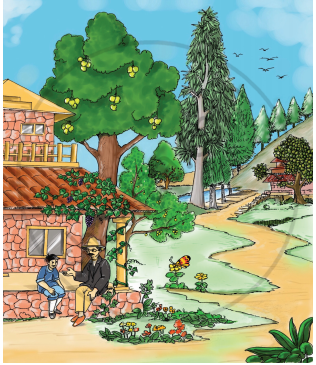Advertisements
Advertisements
प्रश्न
The poem has a literal level and a figurative level. Why has the poet chosen 'tigers' and 'sheep' to convey his message?
उत्तर
Though literally the poem talks of a short story in which a shepherd made a concord with a king of tigers to maintain peace among the two communities. However, if one tries to gauge, there is more to it than just a jungle story. It speaks of the distinction between the proprietor and the proletariat. It is about the class struggle and the oppressor and the oppressed. The shepherd is the politician, the ruler, as depicted in the poem, and other sheep are subjects. The sheepdog, is the warrior, the army, to protect sheep. However, shepherd wants to maintain his sovereignty, so sacrifices a few sheep to maintain a cordial relation with the tigers and goes on signing the pact. It is depicted how the rulers sacrifice their people to maintain their regime.
APPEARS IN
संबंधित प्रश्न
How did Helen display her passion for Radcliffe College?
Griffin failed not only as a son and a scientist, but also as a human being. Comment. (The Invisible Man)
Notice these expressions in the text. Infer their meaning from the context.
-
the thought was almost revolting
-
an expanse of pure white serenity
-
a turning-point
-
accepted her seclusion with resignation
-
a veritable bedlam of chirrupings
-
frivolous rebukes
-
the sagging skins of the dilapidated drum
Locate expressions in the text reflect the Indian idiom, for example, the pride of the generations of his ancestors.
'There is no sophistry in my body' – this statement expresses the brutal frankness of the Hawk. Does the poet suggest something through this statement?
How does the poet tossed back from ecstasy into despair?
Behrman did not know anything about the last leaf on the ivy.
The tongue justifies the possession of the spectacles on behalf of the nose. Pick up the expressions from the poem that argues in favour of the Nose and complete the following web diagram.

Read the following word and use it in a sentence of your own.
Renown
Comment on the given statement after reading the given dialogue -
It’s a pity some honest man not to be better of that ________________________________________________.
Read the passage. Underline the new words. Guess their meaning from the context. Verify it from a good dictionary.
Talk about your favourite season. (A one-minute activity.)
There were no human settlements on the moon.
These two passages are examples of a short introduction to works of art - a short review. They cover the following points:
- The creator
- The theme or subject matter
- Type of art
- Individual style
- Presentation techniques
- Its effect on viewers
- Message or interpretation
Compare the points with those you used for a book review and the review of a play. Present the comparison in the form of a chart.
| Book Review | Review of a play | Review of a painting |
Write the symbol that is used in the poem to represent the following idea.
I made a rare choice.
Spot and write any three alliterative phrases or sentences from the poem.
(Alliterative phrases/sentences are those in which the same sound is repeated.)
The poet uses a free, conversational style in his poem. It is also called Colloquial style.
Pick out and write down such lines or expressions that support the above statement.
- ______ you have not done what I asked.
- _______________________.
- _______________________.
- _______________________.
- _______________________.
- _______________________.
Guess the meaning of the following word.
finely
Read the following line from the poem and answer the question that follow.
My heart will keep the courage of the quest And hope the road's last turn will be the best.
|
My heart will keep the courage of the quest, And hope the road's last turn will be the best. |
- What kind of quest does the poet seek here?
- What is the poet’s hope?
How did Miranda feel when her father raised the storm to destroy the ship?
Teach me to appreciate ______.
- nature
- destruction
- small creatures
Vasantha made a lot of noise because ______
Listen to your teacher read the first part of the story. Many things described in the story can be seen in the picture. Find and name them.

What does the tamarind give?
The battle of Nauranang lasted for three days.
Why did Tenzin cry every day?
Who is responsible for the society?
Who lived in the old house?
Do we worry when the progress is slow?
What did he call his puppet?
